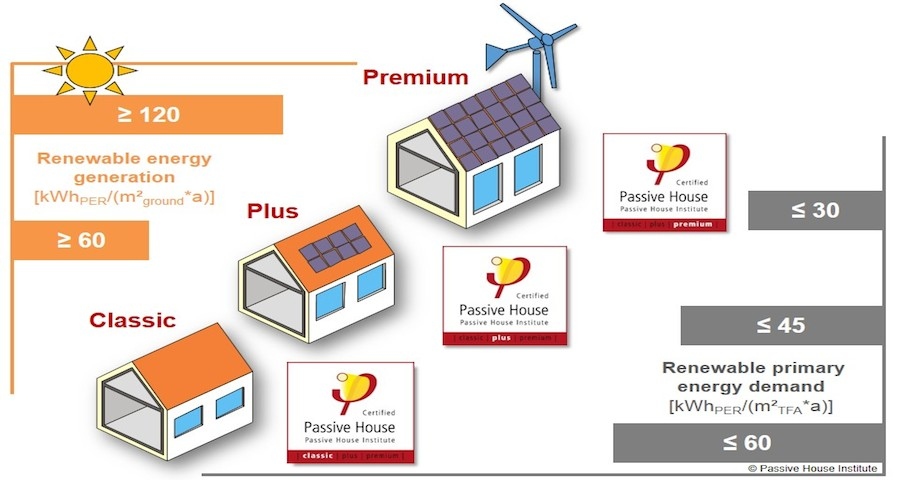The Passive House Institute has announcd the launch of its two new certification categories, Passive House Plus and Passive House Premium, which recognise on-site renewable energy generation.
Renewable energy is the ideal complement to the efficiency of the passive house standard. In order to provide reliable guidance for this combination, the Passive House Institute introduces two new categories for its building certification; in addition to the established Passive House Classic, there will be the Passive House Plus and Passive House Premium classes as well. A new evaluation procedure which also considers energy generation by the building itself will serve as a basis for this. The exact certification criteria and calculation details according to the renewable primary energy (PER) system are available on the online resource Passipedia.
The heating demand of a passive house may not exceed 15 kWh/(m²a). This will continue to apply, but with the introduction of the new categories, the overall demand for renewable primary energy will be used instead of the primary energy demand, which was previously used. In the case of the Passive House Classic category, this value will be 60 kWh/(m²a) at the most. A building built to Passive House Plus is more efficient as it may not consume more than 45 kWh/(m²a) of renewable primary energy. It must also generate at least 60 kWh/(m²a) of energy in relation to the area covered by the building. In the case of Passive House Premium, the energy demand is limited to just 30 kWh/(m²a), with at least 120 kWh/(m²a) of energy being generated.
The heating demand of a passive house may not exceed 15 kWh/(m²a)
“The demand of heating energy is greatly reduced in a passive house; therefore the consumption for hot water and domestic electricity is all the more significant. In the new evaluation, this is taken into account in a meaningful and future-oriented way”, says Dr Wolfgang Feist, director of the Passive House Institute. The new evaluation procedure anticipates the energy transition and considers the building in an environment where only renewable energy is used. “Due to the low consumption of a passive house, such a scenario is easily attainable”, says Feist.
Over a third of the total energy consumed in developed countries is required for operating buildings, especially to heat them. This consumption can be reduced by up to 90% using Passive House technology, and the remaining demand can be met sustainably using renewable energy. Hence, the passive house standard isn’t just an attractive solution for the energy transition; with the introduction of the new categories Passive House Plus and Passive House Premium, it is also a blueprint for the nearly zero-energy buildings (NZEBs) stipulated in the European Buildings Directive, which will come into effect in 2021.
Content credit – Passive House Plus

